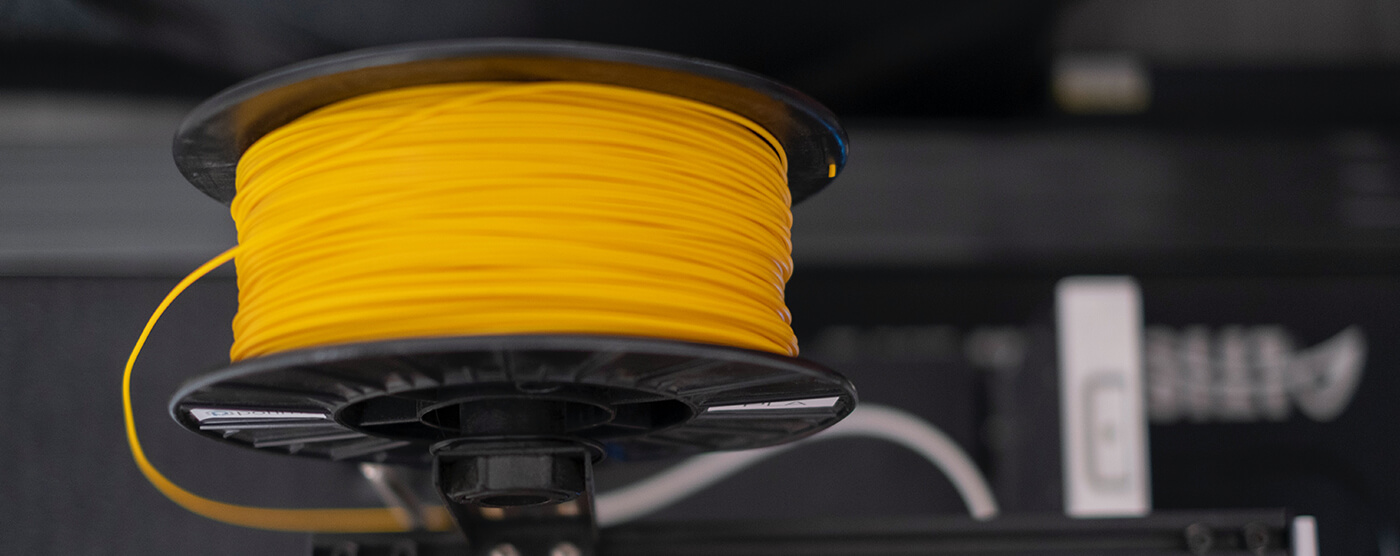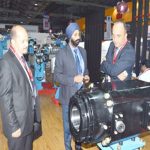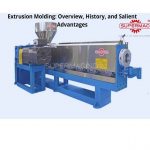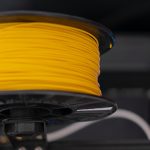All types of plastics which heat can melt and soften, but when cooled they again set are known as thermoplastics. Thermoplastic polymers are classified as crystalline or amorphous. As per their behavior, particularly at high temperatures, thermoplastics are classified as thermosetting and thermoplastics. Thermoplastics get softened when heat treated and get hardened when cooled. They also have branched and linear structures.
On the contrary, the structures of thermosetting polymers are cross-linked and networked, and once hardened they do not get softened when heat treated. All these transformational heating and cooling treatments are given to these polymers in a sophisticated facility provided by the top thermoplastic machine manufacturer in India.
Properties of thermoplastic polymers at a glance
A large number of thermoplastic polymers undergo a reinforcement process carried out with fibers. The prime purpose behind this process is to bring improvement in the physical properties of thermoplastic polymers that deal with heat deflection temperature. As far as the reinforcing materials are concerned, glass fibers are the most prominent ones among them. When armed reinforcing is used, the thermoplastic polymers’ capacity of resisting wear and abrasion increases. Although any thermoplastic can be reinforced with fibers, the given below are the most significant:
- Polyamide polymers make use of glass strands to control weakness. Rigidities are expanded by a variable of three and heat avoidance temperature increments from 150 to 500oF.
- Polycarbonate intensifies utilizing 10, 20, 30 and 40% glass fiber stacking
- Different polymers getting benefitted from the expansion of glass strands incorporate polyphenylene sulfide, polypropylene, and polyethersulfone.
Polymers picked for primary application are typically chosen as a swap for metal. Generally, the alike substitution of a polymer section for a metallic segment will bring about weight savings. Also, polymers can be handily framed into shapes that are challenging to accomplish with metals.
By utilizing a polymer, the molder can plan an appealing shape that favors plastic framing and accomplish a huge saving in cost and weight along with a restorative improvement. An extra expense saving is acknowledged since the polymer part doesn’t need painting for erosion insurance as would the tantamount metal part. Choice of the particular polymer will be based on the mechanical necessities, the temperature and chemical end-use surroundings.
Thermoplastic vs. Thermosetting
Thermoplastic polymers have been in existence for quite a while. It is as of late that the fresher alleged high temperature or superior execution thermoplastics have been presented. The early thermoplastic polymers had prevalently aliphatic carbon spines in which adaptable carbon chains could be expanded and turned into numerous setups effortlessly.
Rigidity was achieved by confining the development of the backbone chain either by crystallinity, for example, in polyethylene and polypropylene, or by the side gatherings as in polystyrene or polymethyl methacrylate. The significant limits with these early thermoplastics that are still available are their low flexible modulus, low glass transition temperature, and poor-grade dissolvable resistance.
Thermoplastic when compared to thermosetting polymers assimilates significantly less dampness with a less important decrease in raised temperature mechanical properties. Thermoplastics are a lot harder than thermosets. What’s more, they also have much better entomb laminar strength and protection from sway. Since no substance response is required, they have exceptionally short handling times, albeit the temperatures and tension are a lot more noteworthy than those expected for thermosetting frameworks with an expansion in costs.
Thermoplastic Polymers Applications
Alkyl (polyester)
- Automotive body panels
- Fender/wing walls
- Tool housings
- Brackets
- Industrial equipment housings
- Coatings.
Epoxy
- Coatings
- Casting compounds
- Encapsulating for electrical components
- Laminates and adhesives.
Phenolic
- Electrical switch housings
- Relays
- Laminates, adhesives (plywood, particleboard)
- Handles (cooking pots and pans)
- Knobs and electrical motor components.
Polyurethane
- Sealants
- Adhesives and coatings
- Automotive body panels (Reaction Injection Molding)
- Foams.
Urea and Melamine Formaldehyde
- Electrical breakers
- Receptacles
- Closures
- Knobs and handles
- Appliance components
- Adhesives
- Coatings and laminates.
Some Important FAQS on Thermoplastic Polymers
What are the examples of thermoplastic?
Examples of thermoplastics include:
- Polyethylene
- Polypropylene
- Polyvinyl chloride
- Polystyrene
- Polybenzimidazole
- Acrylic
- Nylon and Teflon
- Thermo-softening plastic or thermoplastic.
What are the major application areas for thermoplastic polymers?
As thermoplastic polymers have the properties of getting easily shaped and molded into any form as per the requirements, they find applications in the manufacturing of insulators, adhesives, pipes, ropes, and belts.
Do thermoplastics have any toxicity?
As far as toxicity is concerned, it depends upon so many factors such as the inherent toxicity or the generated one. Thermoplastics are generally not toxic and are considered to be safe in a wide range of applications. Some factors can cause toxicity particularly when they are used for biomedicine.
What type of plastic can be called thermoplastic?
When it comes to defining thermoplastics, the terms are quite simple. Any form of plastic polymer that can be molded or plied through easy heat treatment in a facility provided by the leading thermoplastic thermoplastic machine manufacturer and rewinding machine suppliers can be called thermoplastic. All types of plastics get solidified when cooled, and most of them weigh strongly molecularly.
What are thermosetting plastics’ main properties?
- Epoxy resin
- Melamine formaldehyde
- Polyester resin
- Urea-formaldehyde
- Thermosetting plastics.
Concluding Remarks
Supermac Industries (India) Limited was founded in the year 1974. Today, it is a premium supplier of manufacturing systems and process technologies for a wide range of extrusion industries worldwide. As a top thermoplastic machine manufacturer and one of the leading rewinding machine suppliers in India, the company caters to numerous industries in the cables sector. Supermac’s diversified product portfolio includes a comprehensive range of extrusion machines, crossheads, caterpillars, capstans, screws and barrels, take-ups, and pay-offs.
Right from the very beginning, the company has focused on innovation and cost-effectiveness. It has time and again set the newer industry benchmark for devising innovative techniques to meet the burgeoning demands of a new-age economy. Supermac has 3 world-class manufacturing facilities with a cumulative area of 95,000 square ft. All the facilities are manned by a team of experienced engineers that’s adept at handling commissioning and installation tasks of varying complexities. The company has recently entered into a tie-up with SIMPACKS, USA – a specialized coiling machine manufacturer. The tie-up has empowered Supermac to provide end-to-end solutions to building wire manufacturers the world over.





